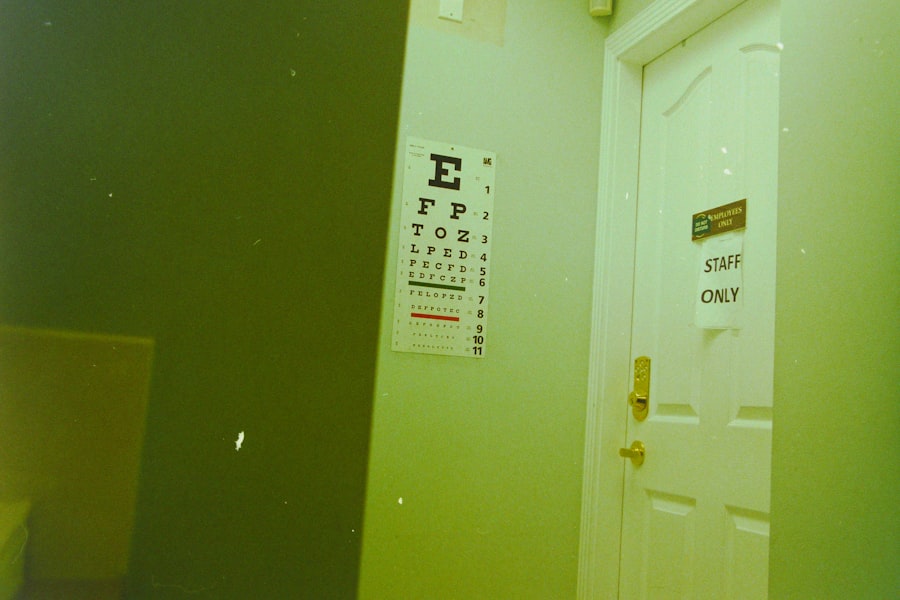Subtotal $0.00
Accessible healthcare is crucial for the well-being of individuals and communities. When healthcare services are easily available and affordable, people are more likely to seek medical attention when needed, leading to better health outcomes. Accessible healthcare also plays a significant role in reducing health disparities and promoting equity.
It ensures that everyone, regardless of their socioeconomic status, geographic location, or other factors, has the opportunity to receive the care they need to live a healthy life. Furthermore, accessible healthcare is essential for early detection and prevention of diseases. When individuals have access to regular check-ups and screenings, potential health issues can be identified and addressed before they become more serious and costly to treat.
This not only improves the quality of life for individuals but also reduces the burden on the healthcare system as a whole. In addition, accessible healthcare promotes economic productivity by keeping individuals healthy and able to participate in the workforce. Overall, ensuring that healthcare services are accessible to all is fundamental for building healthier and more resilient communities.
Key Takeaways
- Accessible healthcare is crucial for ensuring that everyone has the opportunity to receive necessary medical treatment and services.
- Barriers such as cost, location, and lack of insurance can prevent individuals from accessing healthcare, leading to negative impacts on their health and well-being.
- Inaccessible healthcare can have a detrimental effect on communities, leading to increased rates of illness, reduced productivity, and higher healthcare costs.
- Strategies for improving access to healthcare include expanding insurance coverage, increasing the number of healthcare facilities, and implementing telemedicine and mobile clinics.
- Technology plays a key role in making healthcare more accessible by providing remote consultations, electronic health records, and health monitoring devices.
Barriers to Accessing Healthcare
Despite the importance of accessible healthcare, there are numerous barriers that prevent individuals from accessing the care they need. One of the most significant barriers is the cost of healthcare services. Many people, especially those with low incomes or without health insurance, struggle to afford medical care, medications, and treatments.
This financial barrier often leads individuals to delay or forgo necessary healthcare, which can have serious consequences for their health. In addition to cost, geographic barriers can also hinder access to healthcare. In rural areas, for example, there may be a shortage of healthcare providers and facilities, making it difficult for residents to access medical services.
This is further compounded by transportation challenges, especially for those who do not have access to a vehicle or public transportation. Language and cultural barriers can also impact access to healthcare, particularly for immigrant and minority communities. Without access to interpreters or culturally competent care, individuals may face challenges in understanding their health conditions and navigating the healthcare system.
The Impact of Inaccessible Healthcare on Communities

The impact of inaccessible healthcare on communities is far-reaching and profound. When individuals are unable to access the care they need, their health suffers, leading to increased rates of chronic diseases, disability, and premature death. This not only affects the individuals themselves but also places a strain on families and communities as they struggle to care for their loved ones and cope with the emotional and financial burdens of poor health.
Inaccessible healthcare also contributes to widening health disparities within communities. Those who are already marginalized or vulnerable due to factors such as race, ethnicity, gender, or disability are disproportionately affected by barriers to healthcare access. This perpetuates inequality and undermines the overall well-being of the community.
Furthermore, the economic impact of inaccessible healthcare is significant. When individuals are unable to access timely and preventive care, they are more likely to require costly emergency treatments and hospitalizations, placing a burden on the healthcare system and driving up overall healthcare costs.
Strategies for Improving Access to Healthcare
| Strategies | Metrics |
|---|---|
| Telemedicine | Number of virtual consultations |
| Community health workers | Percentage of population reached |
| Mobile clinics | Number of visits to underserved areas |
| Health education programs | Change in health literacy levels |
Addressing barriers to healthcare access requires a multifaceted approach that involves policy changes, community engagement, and innovative solutions. One key strategy is to expand health insurance coverage to ensure that more people have access to affordable healthcare services. This can be achieved through initiatives such as expanding Medicaid eligibility, providing subsidies for private insurance plans, and creating public options for coverage.
Additionally, increasing funding for community health centers and safety-net hospitals can help improve access to care for underserved populations. Another important strategy is to invest in telehealth and other technology-enabled care delivery models. Telehealth allows individuals to access medical care remotely, reducing geographic barriers and increasing convenience.
This is particularly beneficial for rural and underserved communities. Furthermore, addressing social determinants of health, such as housing instability and food insecurity, can also improve healthcare access by addressing the root causes of poor health.
The Role of Technology in Making Healthcare More Accessible
Technology plays a crucial role in making healthcare more accessible. Telehealth, in particular, has emerged as a powerful tool for expanding access to medical services, especially in remote or underserved areas. Through telehealth platforms, individuals can consult with healthcare providers, receive diagnoses, and access treatment plans without having to travel long distances or wait for appointments.
This not only improves convenience for patients but also reduces the burden on traditional healthcare facilities. In addition to telehealth, technology has also enabled innovations in remote monitoring and home-based care. Wearable devices and mobile apps allow individuals to track their health metrics and communicate with their healthcare providers from the comfort of their homes.
This is particularly beneficial for individuals with chronic conditions who require ongoing monitoring and management. Furthermore, technology has facilitated the digitization of health records and streamlined administrative processes, making it easier for individuals to access their medical information and navigate the healthcare system.
The Importance of Healthcare Education and Outreach

Healthcare education and outreach are essential components of improving access to care. Many individuals may not be aware of the resources available to them or may lack the knowledge needed to make informed decisions about their health. By providing education on preventive care, disease management, and available healthcare services, communities can empower individuals to take control of their health and seek appropriate care when needed.
Outreach efforts are also critical for reaching underserved populations who may face additional barriers to accessing healthcare. By engaging with community organizations, faith-based groups, and local leaders, healthcare providers can build trust and establish connections with those who may be hesitant to seek medical care. Culturally competent outreach that takes into account the unique needs and beliefs of different communities can help bridge the gap between healthcare services and those who need them most.
The Future of Accessible Healthcare
The future of accessible healthcare lies in continued innovation and collaboration across sectors. As technology continues to advance, there will be increasing opportunities to leverage digital solutions for expanding access to care. This includes not only telehealth but also artificial intelligence for diagnostics, remote monitoring devices, and personalized medicine based on genetic data.
Furthermore, addressing social determinants of health will be an increasingly important focus for improving healthcare access. By addressing factors such as housing instability, food insecurity, and environmental hazards, communities can create the conditions for better health outcomes and reduce the need for costly medical interventions. Ultimately, achieving accessible healthcare requires a commitment from policymakers, healthcare providers, community organizations, and individuals themselves.
By working together to address barriers and promote equitable access to care, we can build healthier communities where everyone has the opportunity to thrive.
If you’re interested in learning more about accessible healthcare services, you might find valuable information on the SOCASAN website. Specifically, their page on Soins de santé accessibles offers insights into various healthcare programs and services that are designed to be affordable and accessible to a wider audience. This resource can be particularly useful for understanding how healthcare accessibility is being addressed in different communities.
FAQs
What are accessible healthcare services?
Accessible healthcare services refer to the availability and affordability of medical care and treatment for individuals. This includes physical accessibility to healthcare facilities, as well as financial accessibility for individuals to afford necessary medical services.
Why is it important to have accessible healthcare?
Accessible healthcare is important because it ensures that all individuals have the opportunity to receive necessary medical care and treatment, regardless of their financial situation or physical location. Accessible healthcare can lead to improved health outcomes and a more equitable society.
What are some barriers to accessing healthcare?
Barriers to accessing healthcare can include financial constraints, lack of health insurance, geographical distance to healthcare facilities, language barriers, and discrimination. These barriers can prevent individuals from seeking and receiving necessary medical care.
How can healthcare services be made more accessible?
Healthcare services can be made more accessible through various means, including the expansion of health insurance coverage, the establishment of community health centers in underserved areas, the implementation of telemedicine services, and the provision of language interpretation services.
What are the benefits of accessible healthcare?
Accessible healthcare can lead to improved health outcomes, reduced healthcare disparities, increased preventive care utilization, and overall better population health. It can also contribute to economic productivity and social well-being.







Comments are closed